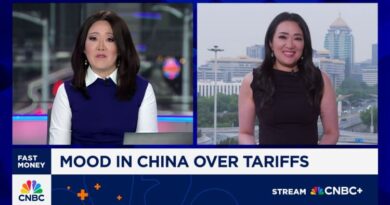Copper Price Update: Q2 2025 in Review
The copper price was volatile during the second quarter of 2025, but remained elevated compared to the price point near the start of the year.
Several factors were at play for copper during the second quarter, most notably the ongoing threat of tariffs on several sectors with close ties to the red metal. This also caused significant fallout in global financial sectors, with economists early in the quarter raising the spectre of a widespread recession.
Uncertainty, fear, and speculation were primary price drivers as metal traders, market movers, and investors tried to determine the best investment strategy against the backdrop of a chaotic economic landscape.
What moved the copper price?
Copper started the quarter in freefall.
After reaching an all-time high of US$5.22 per pound on the COMEX on March 26, the price plummeted to US$4.06 on April 8. Although it wouldn’t stay there long, by April 11, it had climbed back above US$4.50 and continued to US$4.88 on April 22.
Copper price chart, April 01 to July 23, 2025
via TradingEconomics
From the end of April, all of May and much of June, the copper price was volatile but range-bound, trading between US$4.50 and US$4.80.
However, the end of June saw a surge in momentum in the market, as the price began to climb, and on June 30, it reached US$4.97 per pound.
Since then, the price has soared. Setting a new all-time high of US$5.65 per pound on July 10.
Supply and demand by the numbers
Over the past few years, a growing imbalance has developed in the copper market, as demand growth has outpaced the expansion of primary and secondary supply lines.
According to a June 24 press release, data from the International Copper Study Group (ICSG) showed a 3.2 percent growth in refined production, with a combined gain of 4.8 percent from China and the Democratic Republic of the Congo (DRC), the two largest producers globally. Further increases came from Asia, where output was 3.5 percent higher.
The increased levels were offset by Chile, where smelter output fell 9.5 percent, due to smelter maintenance shutdowns.
However, the refined production outpaced mining production, which rose just 2 percent during the period. Peru accounted for a 5 percent year-over-year growth due to increased output at MMG’s (OTC Pink:MMLTF) Las Bambas, Anglo American (LSE:AAL,OTC Pink:AAUKF,OTC:NGLOY) and Mitsubishi’s (OTC Pink:MIMTF) Quellaveco and Chinalco Mining’s (OTC Pink:ALMMF) Toromocho mines.
Likewise, production in DRC surged by 8 percent, attributable to the expansion of the Ivanhoe Mines (TSX:IVN,OTC:IVPAF) and Zijin Mining’s (OTC Pink:ZIJMF,HKEX:2899,SHA:601899) joint venture Kamoa-Kakula mine.
Demand continued to grow at a higher rate than refined output during the first quarter of 2025, with the ICSG suggesting a 3.3 percent increase in copper usage.
The largest segment came from Chinese markets,…






